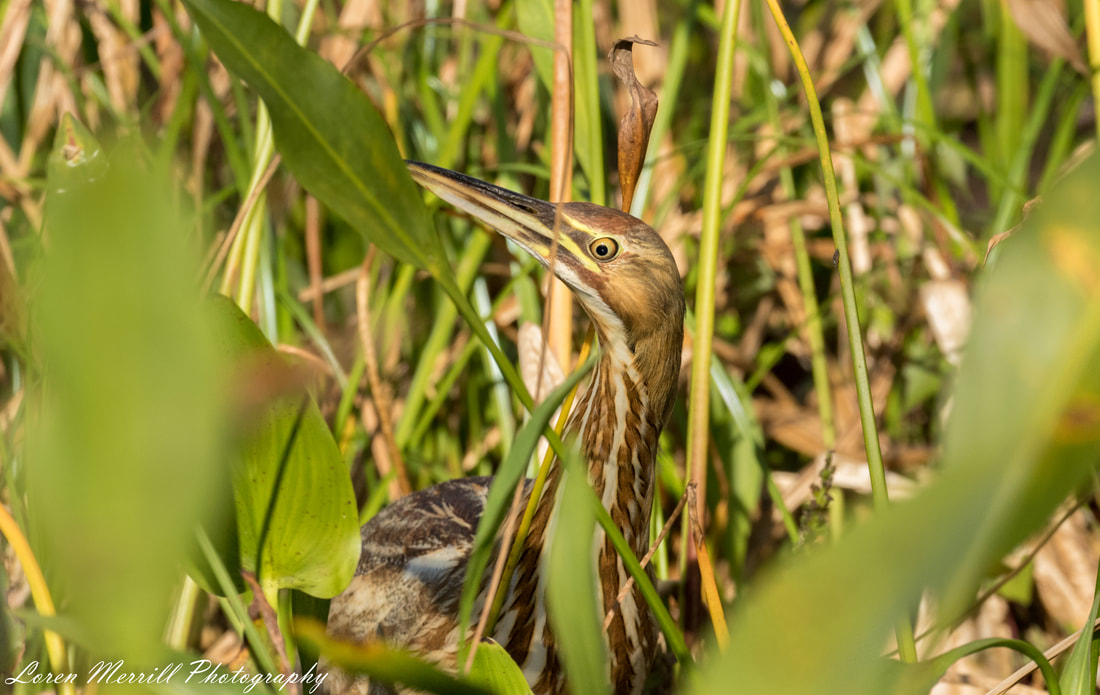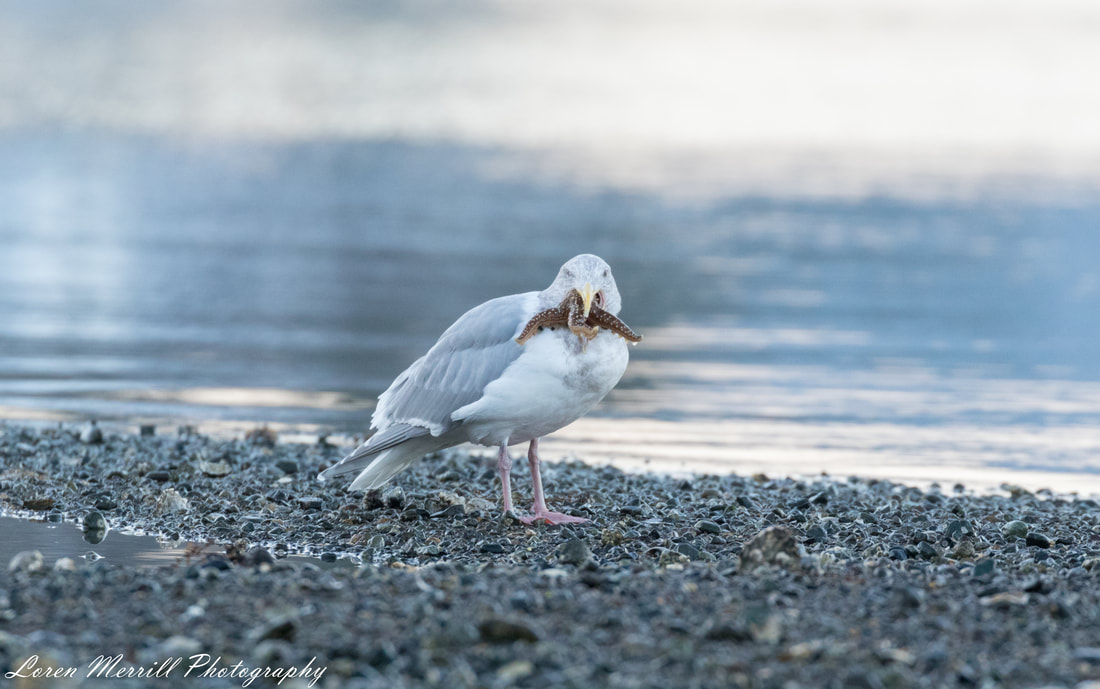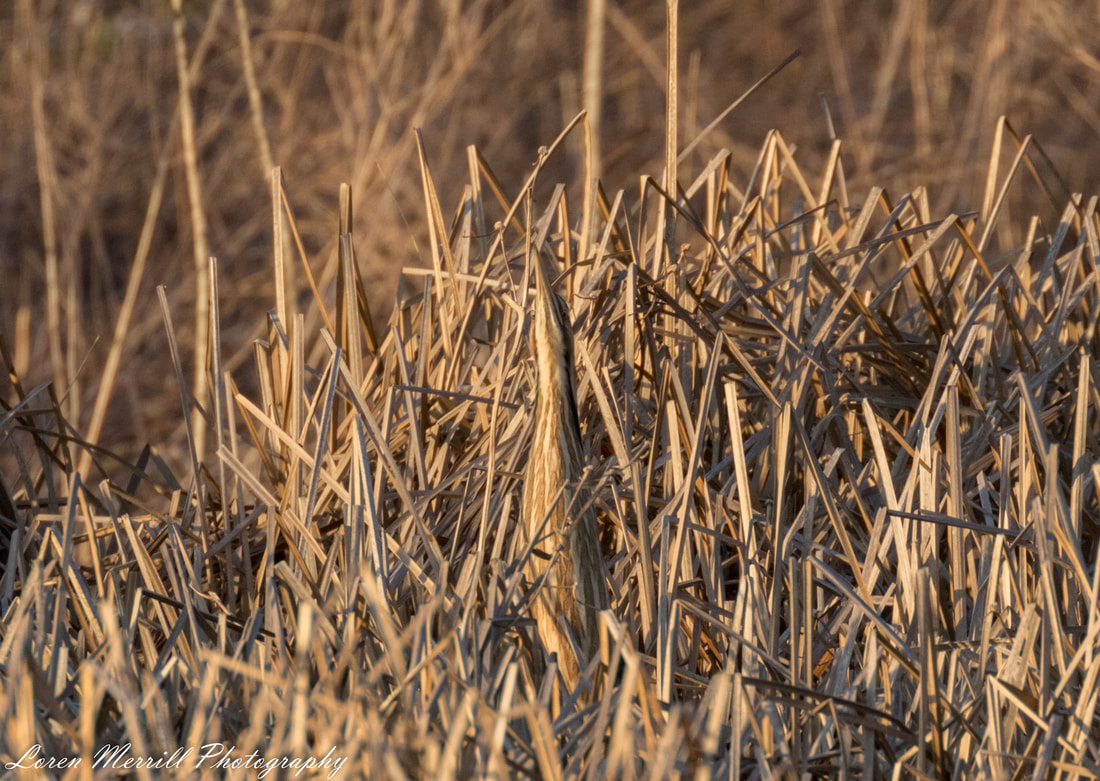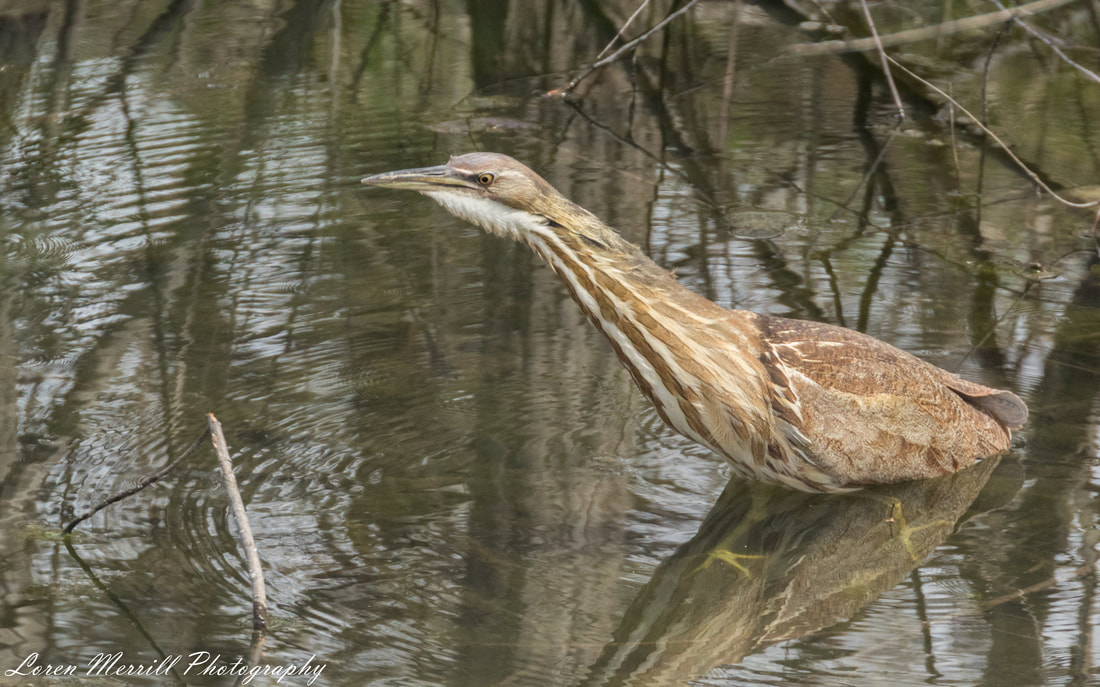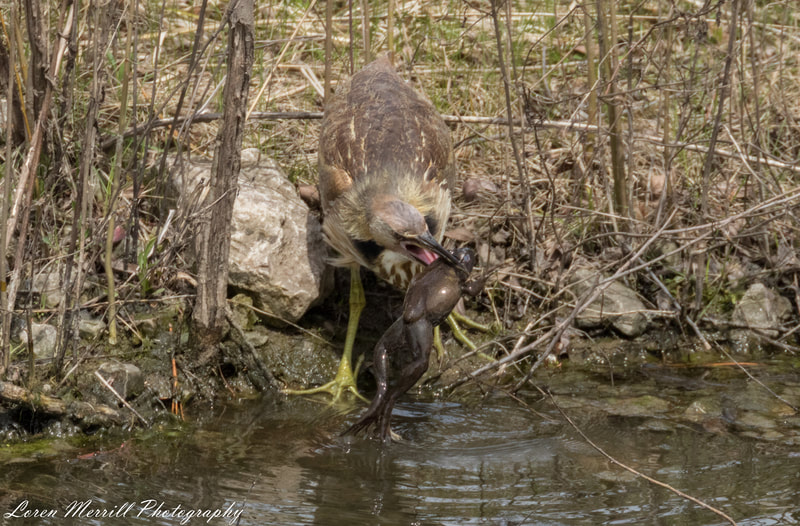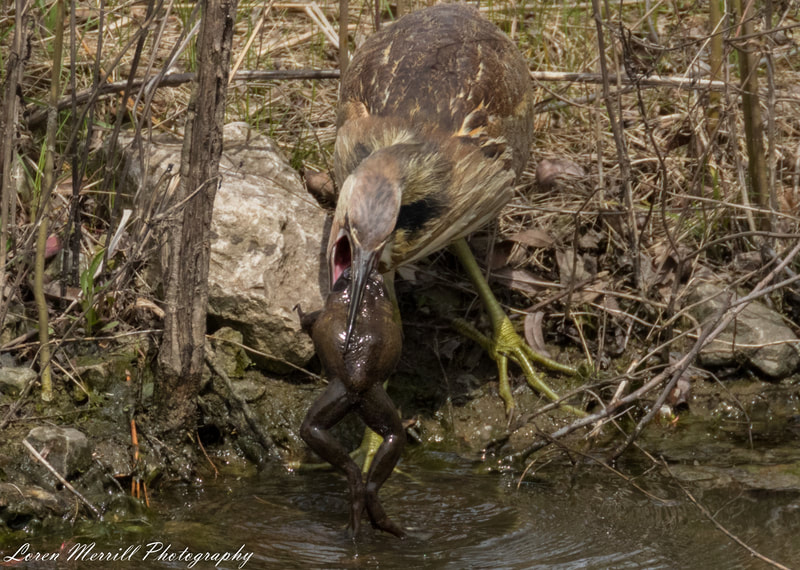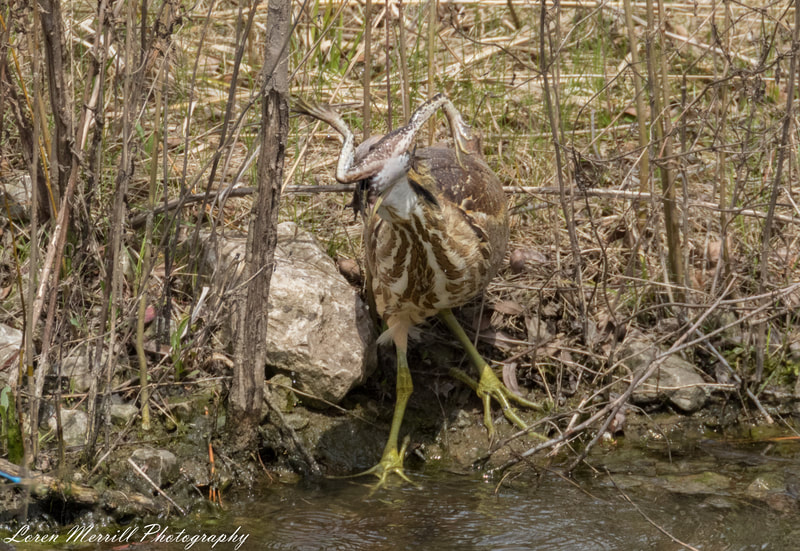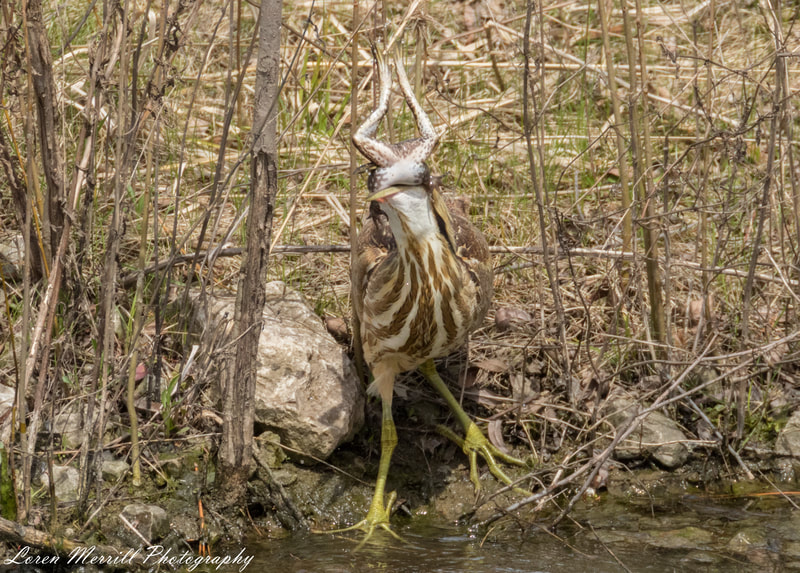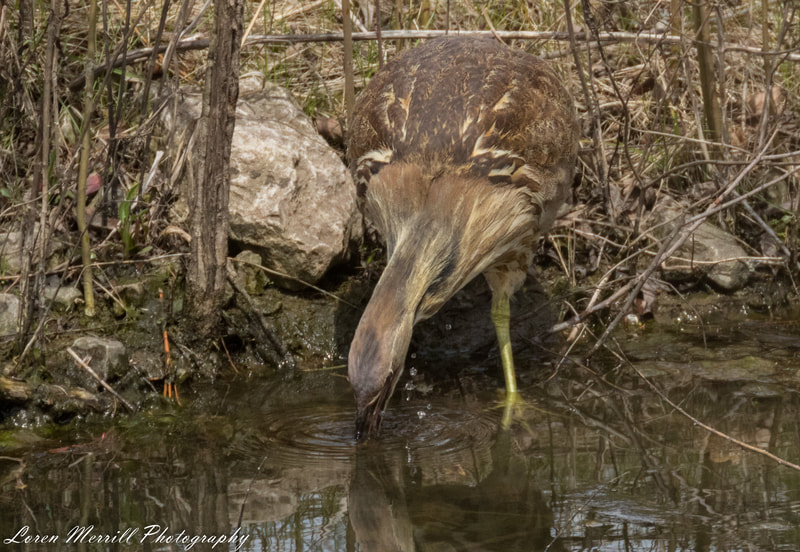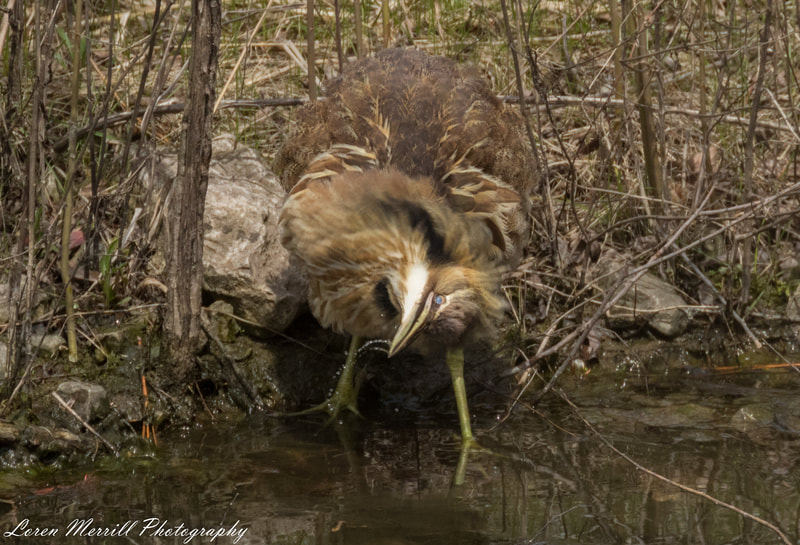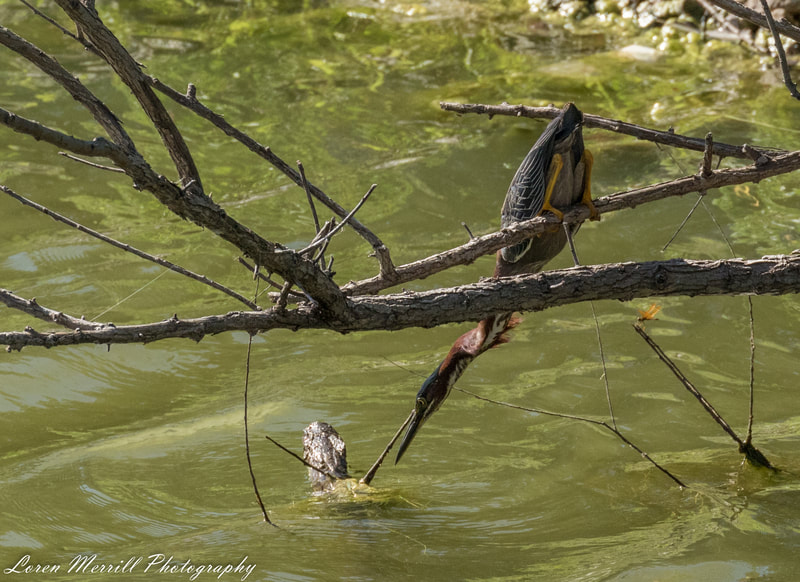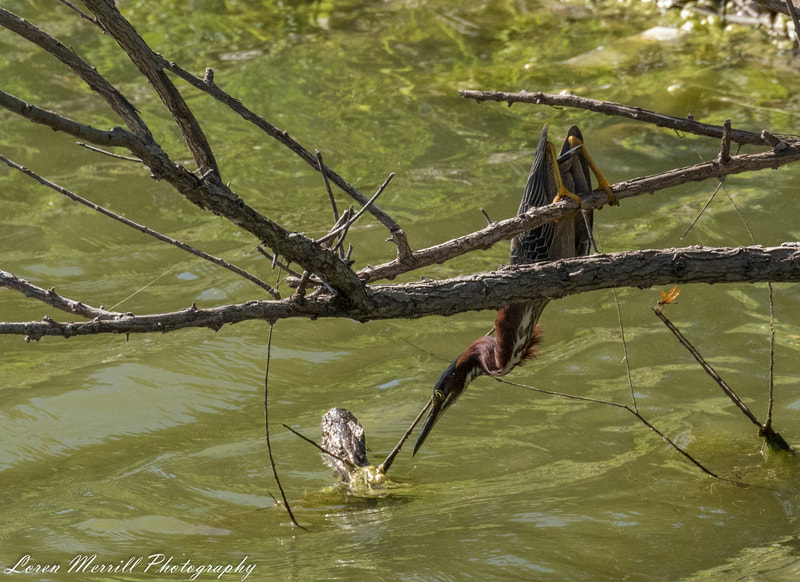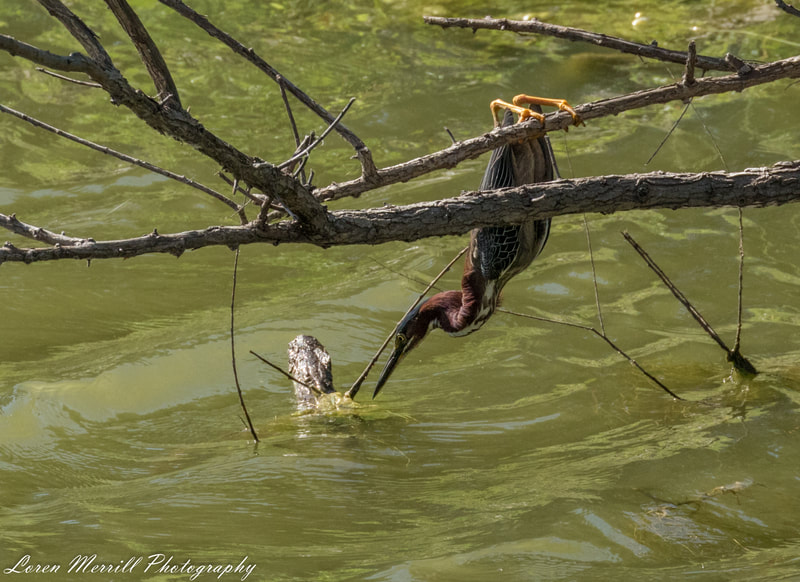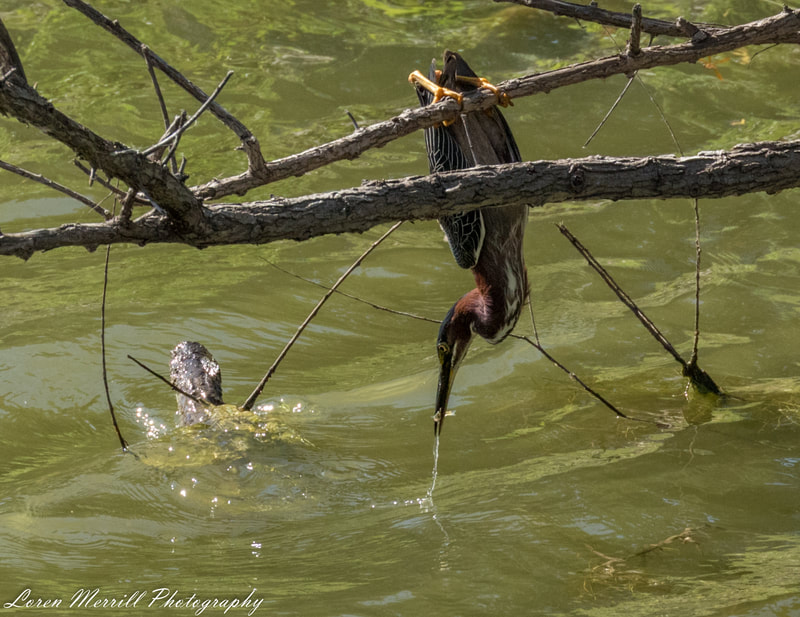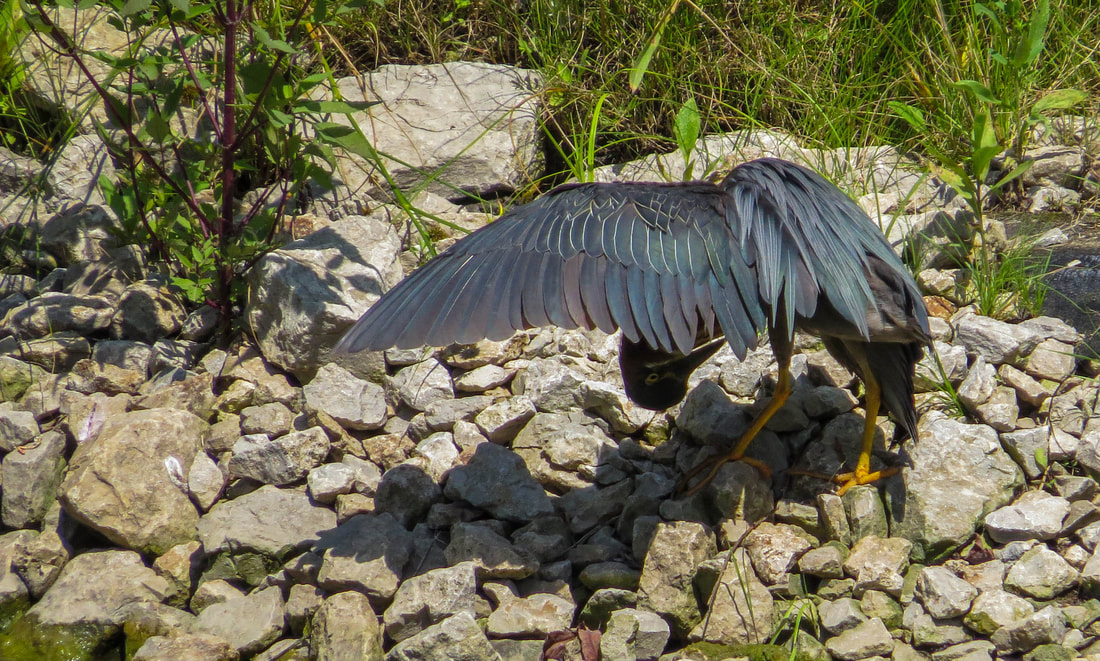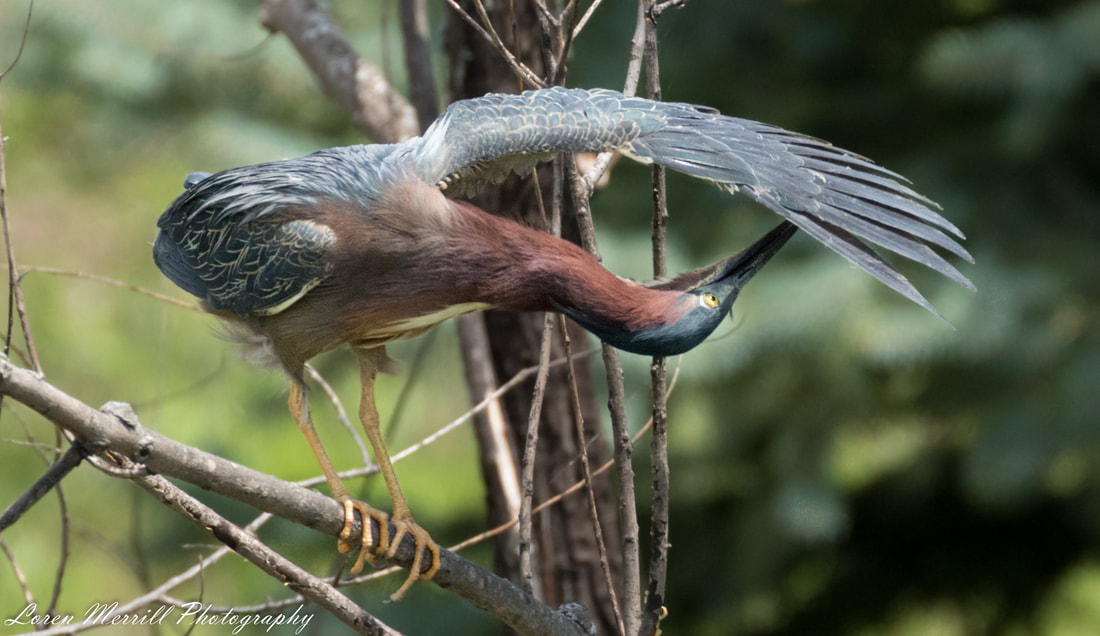|
If you’ve never seen a bird try to swallow something bigger than its head, it can be hard to imagine how such a feat would be possible. Just think about yourself for a moment; could you swallow something as big as a football? Unlikely. And remember that birds don’t have teeth, so there’s no chewing involved. What they do have (some species anyway) are remarkably elastic jaws and throats, and while in British Columbia, we witnessed the amazing stretch-act performed by the glaucous-winged gull. Gulls will eat just about anything, but they truly adore sea-stars; they almost seem to savor the experience of eating them. In much the same way that a person will let a piece of chocolate melt in their mouth, a gull will often sit on the beach with part (or even most) of a sea-star sticking out of its bill for over an hour. Very slowly, the sea-star disappears down the gull’s gullet until all that remains is a giant bulge in the gull’s throat. Gulls are notorious for swallowing large items, but one of the most impressive swallowing acts I can recall was performed by an American bittern that showed up in our backyard in Illinois in spring 2018. American bitterns are medium-sized members of the heron family (Ardeidae) and are generally considered to be among the most cryptic of North American birds. These secretive waders usually reside in wetlands where their striped tan and black plumage helps them blend in with long reeds and grasses. When they sense danger, they will often stand erect with their bill pointed upwards so as to more fully mimic the vegetation around them. It was therefore a bit of a shock when I went onto our balcony on an early-spring morning and noticed one standing at the edge of the retention pond behind our apartment. In and of itself this might not have been unusual as bitterns migrate through that area in the spring, but our pond had no emergent vegetation, which left the bittern without its customary cover. There was a patch of scrubby trees clustered at the edge of the pond, and when a neighbor went out with her dog, the bittern stalked into the patch of trees and vanished into the shadows. The bittern remained in hiding until long after the threat had passed, and then crept back to the water. The pond had a reasonably large population of smallmouth bass and bluegill sunfish, but the spring had been quite cool, and the cold water temperatures meant that most of the fish were still in deeper sections of the pond. I watched the bittern stalk its way around the edge of the pond at a glacial pace before I had to leave for work. I thought that would be the end of our backyard bittern adventures, but to my surprise, the bittern stuck around for days. I would go out onto the balcony to find the bittern in various states of hunting or hiding. Sometimes the bittern would be out in the water up to its belly, frozen in a pre-strike pose, while other times it would simply be standing on the shore looking dour. The bittern attracted a fair bit of attention from the locals while it was there. A belted kingfisher spent part of a morning perched above to the bittern, presumably hoping that the bittern’s activities would spook some fish out of hiding that it would then be able to dive in after. One of the resident Cooper’s hawks seemed to take offense at the bittern’s presence, and gave it a warning fly-by, buzzing right over the bittern’s head. I wondered at the bittern’s prolonged stay; there didn’t appear to be much in the way of available food, the pond lacked good cover, and the bittern was exposed to semi-frequent disturbances from the neighbors, both human and animal alike. But the bittern’s persistence paid off, and one morning when I went to look for the bird, I found it with an enormous bullfrog in its bill. The frogs had recently emerged from their period of winter estivation under the mud, and on sunny days could be seen basking on the banks of the pond. The continuing cool temps likely made them sluggish, however, and potentially easier targets for a hungry predator like the bittern. Upon being seized, the bullfrog had employed its best defense against predators that cannot chew; it gulped in air and inflated its body like a balloon. From my vantage point, it looked like a winning strategy. I watched the bittern maneuver the frog-balloon around, trying to get it positioned so that it could swallow the puffed-up amphibian, but every time it attempted to get the frog into its mouth, the inflated air sacs precluded the bittern from getting anything more than the head in. Unfortunately for the frog, the bittern’s hunger had endowed it with an elevated sense of determination, and it began to implement a slow and slightly gruesome plan for overcoming the frog’s defense. Without going into too much detail, the plan consisted of battering the frog around and trying to puncture it with its bill. Occasionally it would dunk the frog in the water to lubricate it before trying to gulp it down, but this didn’t seem to help. After 45 minutes of this tactic, I could see that the frog had deflated somewhat, and looked to be punctured in a couple of places. Still the bittern was having trouble; it would flip the frog’s hind quarters towards the sky to enlist gravity’s help. Finally, it all came together for the bittern, and the large (and now dead) frog disappeared down the bird’s throat. The bird chased the meal with a couple sips of water, and then walked to the edge of the trees to digest its large meal in peace. Within a day or so the bittern had moved on, presumably happy to continue its migration northward with the energy derived from the bullfrog. In the five years we lived at that location, that was the only bittern I had seen or heard, but it was not the only amazing biological phenomenon I was privileged to observe from our balcony. Despite living in a large development and having a massive interstate highway pass a few hundred feet from our place, our backyard was a constant source of natural wonderment. In those five years, I published three scientific articles based on observations I made from the balcony. In fact, the idea for this blog was born of those experiences and was going to be called The View from the Balcony. While we lived there, I would sit out on the balcony in the morning with my cup of coffee and watch the natural rhythms of the pond unfold below me. In the last post I mentioned one of the papers that emerged from those observations (the grebes foraging on land), but another balcony publication came together over a much longer time-frame. That paper arose from observations made two years apart and involved another member of the heron family—the green heron. The green heron is the second smallest heron in the US (standing only 17 inches tall), but it has achieved very large stature in the bird world because it is one of the few avian species to routinely demonstrate tool-use. Green herons will use pieces of vegetation or, when available, bread crumbs, to lure fish in to striking distance. I also watched one individual hang practically upside-down from a branch, coiled in a striking pose, and wait for a fish to swim underneath it. When a fish swam close enough, the heron plunged its head into the water, grabbed the fish, and was then able to right itself onto the branch to swallow it. Green herons were common visitors to our pond, and between May and September one or more of these diminutive waders could be found creeping along the perimeter of the pond or perched in one of the trees overhanging the pond. One particularly hot weekend day in early July I wandered onto the balcony in the glaring light of the late-morning and made a quick appraisal of things around the pond. On the opposite shore stood a green heron exhibiting some classical preening behavior; it was drawing feathers through its bill, fluffing up its body feathers, and scratching its head with its claw. Then it did something I had never seen; the heron opened and extended one wing and held it parallel to the ground. It then cocked its head under the opened wing and looked up at the back-lit feathers. The contorted bird seemed to be carefully inspecting each feather and would occasionally peck at them. I took a couple of pictures, but after a little while the heron closed its wings, walked to the water’s edge and began hunting, and I returned inside. I thought the observation was interesting, but that was extent to which the experience occupied my mind. Until almost exactly two years later, when I observed another (or the same) bird exhibiting the same behavior in almost the same location. As before it was late morning on a hot weekend day in early July, and I had been watching a heron perched in a willow tree preen itself. Then, slowly, it unfurled its wing, held the wing out to the side, and cocked its head underneath, peering up at the wing feathers. As before, it appeared to be carefully scanning the feathers and occasionally pecking at them. My mind returned immediately to the previous episode and I was struck by something; in all my hours watching these herons in the early mornings, and to a lesser extent, in the evenings, I had never seen this behavior. But on two hot, sunny, early July weekend days I had gone out onto the balcony in late morning and witnessed a heron engaging in this unique preening behavior. After researching the issue in some depth and thinking over the two events at length, I settled on a possible explanation; the heron(s) were using light and heat to help facilitate ectoparasite removal. Most ectoparasites don’t like being exposed to high heat or bright light. It is likely that backlighting the wing allows the bird to more easily locate any ectoparasites attached to the feathers, and exposing the feathers to the hot, bright sun makes any ectoparasites on those feathers uncomfortable enough to move around, which also increases the bird’s chances of seeing and removing them. I (or someone else) would need to conduct some experimental manipulations to verify these ideas, but for now I’m happy to leave things as speculative.
Next week: TBD Note: We have started a View Out the Door weekly newsletter. If you would like to get notifications about when new posts are up, and other tidbits related to the blog, email viewoutthedoor “at” gmail “dot” com with the subject header SUBSCRIBE.
0 Comments
Leave a Reply. |
About the author:Loren grew up in the wilds of Boston, Massachusetts, and honed his natural history skills in the urban backyard. He attended Cornell University for his undergraduate degree in Natural Resources, and received his PhD in Ecology from the University of California, Santa Barbara. He has traveled extensively, and in the past few years has developed an affliction for wildlife photography. Archives:
|
